Shore Diving Done Right
Shore Diving Done Right
Shore diving means diving from the shore rather than from a boat. Some people consider this a lower form of diving, but this is highly unfair.
Some fantastic dive sites can be found just off the shores, and there is no need to take a boat if you have some amazing diving opportunities right on your doorstep.
Furthermore, shore diving can sometimes be very strenuous and challenging, so it is not, as most people think, just something for beginners to the diving world to take part in.
Therefore, In this article, we have included the following topics for shore divers:
- The benefits of shore diving
- Tips for before & after your shore dive
- And the best shore diving destinations
The Benefits of Shore Diving
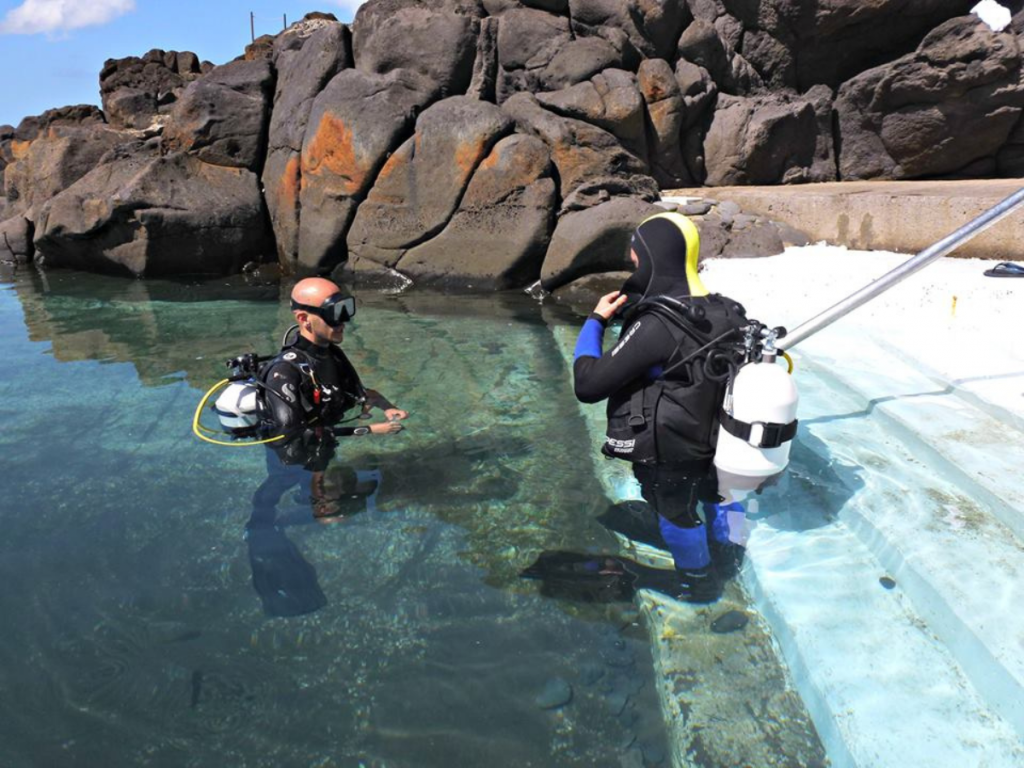
With Shore Diving, you decide on your own schedule of when and where to go
There are many benefits to shore diving, particularly for those who suffer from seasickness.
And unlike on a boat where you will have a guide, you’re in charge when shore diving. You decide on your own schedule of when and where to go.
Many shore dive locations offer fantastic night diving opportunities. Remember that you’ll need a decent dive light to see correctly.
There are excellent sites for anybody interested in shore diving worldwide: from Curacao in the Caribbean to Bali in Indonesia.
Shore Diving Tips – Before the Dive
Research the Proposed Dive Site.
While listening to the suggestions of other shore divers is still the greatest approach to learning about diving locations, another fantastic place to start your search for an excellent shore dive site is on the internet. If it’s a great place to dive, someone else has already visited and written a review or a summary of their diving experiences. Evaluations of local dive sites can tell you about the terrain and marine life that you may expect to see and where the best entry points and exit points are.
Check Your Dive Gear
Because you’re beginning from the beach, you may need to snorkel for a short distance before diving. This implies that you’ll also need a snorkel apart from your regular gear (preferably one that folds and tucks away when not in use). You’ll also need a compass to help you find your way back to the beach. A dive computer with a 3D digital compass is not a bad idea for shore dives.
Pick Your Time.
Shore diving has several advantages, one of which is that you aren’t restricted by boat schedules. Depending on where you are, though, the tides may cause problems for your diving. The best diving conditions are generally obtained during slack tide. The visibility is usually greater at slack high tide, and your entry point and exit include more straightforward conditions. Find out when high tide is and plan to arrive at the location soon. It will be low tide by the time you suit up and walk to the water.
Examine the Conditions as Soon as You Arrive.
When you get to the dive location, take a stroll down to the beach and check out how the water looks. Watch the surf for a little while. If there are any, get a sense of the sets and lulls between them. If the surf appears rough or just too overwhelming, cancel your dive.
Get Your Bearings and Mark Navigation Points
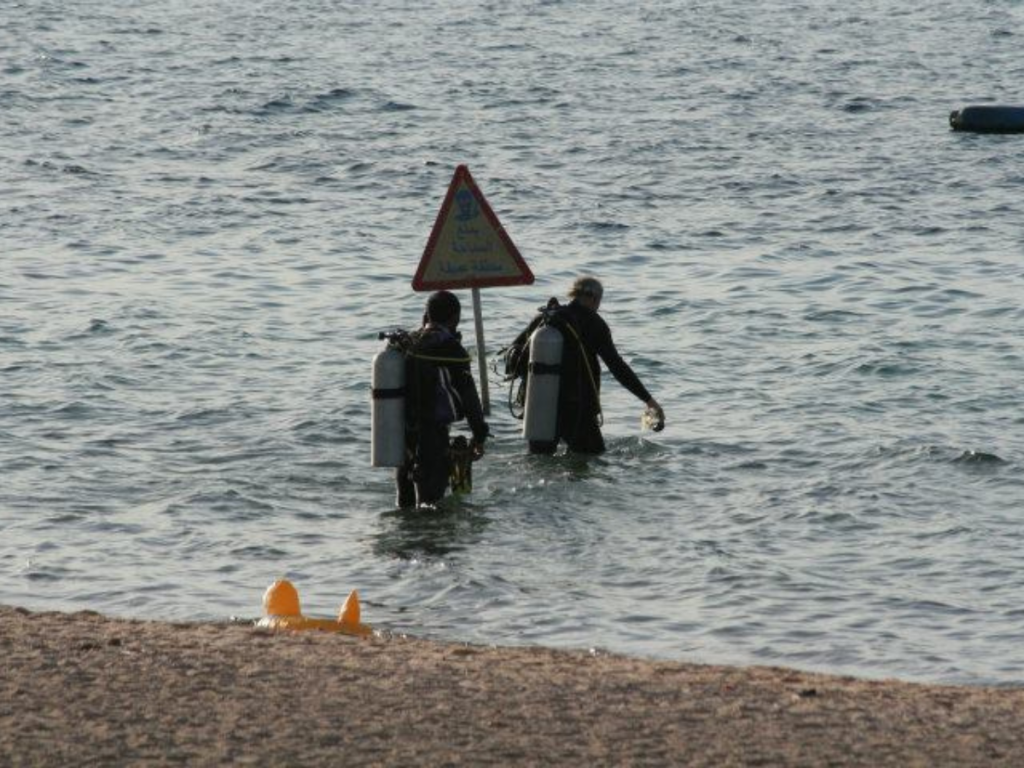
Mark navigation points
Examine the coast for hazardous locations, such as steep or jagged surfaces that might harm you or your gear. Watch for navigation points like a dive flag, peer, or a lighthouse. Discuss your entry area and exit point with your dive buddy, and use your compass to find your way in the water.
Shore Diving Tips – After the Dive
Exiting the Water.
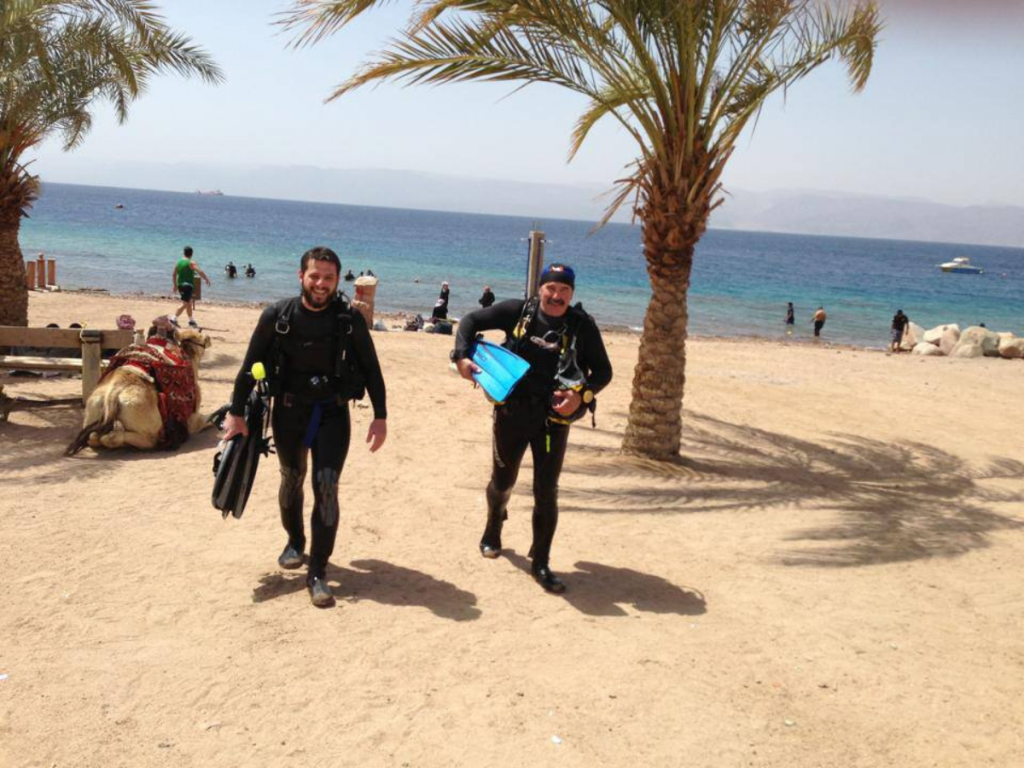
Remove your fins and quick-march out of the water
When heading back in from your dive, make sure to come up well before reaching the surf zone. Inflate your BCD and head toward land while keeping an eye on the waves. Watch out for rocky shores, any boat traffic, and keep track of the sets and anticipate when the next lull will occur. When it does, stay close to your buddy and swim to shore. Remove your fins and quick-march out of the water when you reach chest-deep water, keeping an eye on the waves behind you for any breakers looking to make a fool of you.
If you’re attempting to exit over rocky terrain, reverse the approach you used to get in. Ride the surge in, grab hold of the rocks as it recedes, then take off your fins and get out as soon as possible.
Finishing Your Scuba Diving Day
Bring two things to finish your day of shore diving comfortably. One is a mat to stand on while changing out of your scuba gear. While barefoot, standing on wet, filthy, and sometimes scorching sand, rocks, or asphalt is not pleasant. Second, bring some freshwater to rinse yourself and your equipment after diving. You never know when you’ll want to stop for food on the road or go back to your resort. A decent body wash makes the remainder of the day much more pleasurable.
Top Destinations For The Best Shore Diving
Shore dives are frequently a popular choice for courses, new divers, and snorkelers when the seas are calm but don’t be fooled into believing there isn’t much to see. In reality, many beaches worldwide provide better diving conditions than offshore sites.
From well-known favorites to lesser-known gems, read on for the best shore diving destinations.
Curaçao
Clear seas, amazing sea life, and excellent shore diving are part of this Caribbean treasure. The beaches in this region are often sandy, making the entrances and exits simpler (although the swim to the reef is longer.) and can be found in front of your resort.
The calmest and safest diving is in the south. Blue Bay Wall is home to corals, fish, and other unusual creatures such as frogfish and seahorses. At Playa Grandi, you’ll almost certainly encounter sea turtles and octopus, rays, and morays in the nearby Garden. The latter is a gentler, sloping site with turtles, morays, rays, and stunning macro life. The shipwreck of the MV Superior Producer is a dive site where you’ll find angelfish, barracuda, and tarpon.
Curacao is an amazing place for both the beginner and experienced diver. And you will find many diving schools where you can book guided shore dives.
Bali, Indonesia
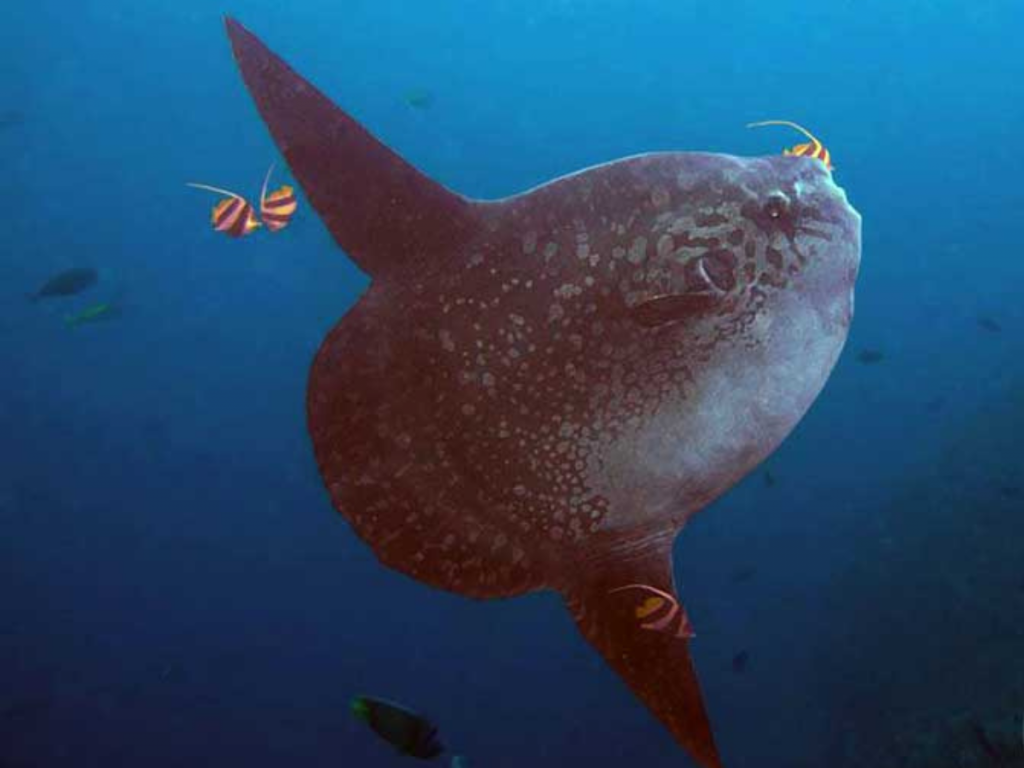
Bali is home to Mola Mola
Bali is a big island and has some of the best diving in Asia, with thrilling shore dives available to all divers, particularly at Amed and Tulamben. Black volcanic sand at The Drop Off provides a stunning backdrop for pygmy seahorses, ghost pipefish, and mantis shrimp. Nearby, you won’t want to miss the world-famous USAT Liberty shipwreck. Bali offers many artificial reefs (a lot can be found along the northern coastline), and is home to mola mola and mantas and numerous other species of fish. Napoleon wrasse, triggerfish, sea snakes, tuna, barracuda, stonefish, and reef sharks are among the regular visitors.
Bonaire
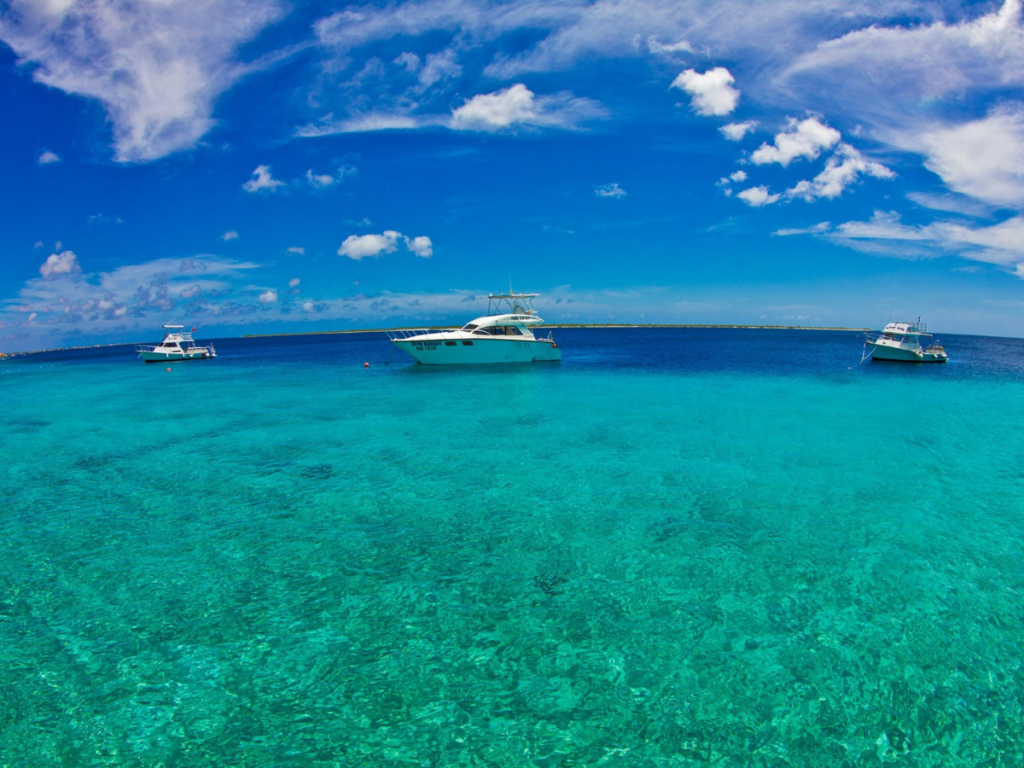
In Bonaire, you’ll be surrounded by clear waters
Bonaire, a small island in the Caribbean Sea, has over 75 dive sites that may be accessed from the beach. Many of them are identified by signs on land, and they even have undersea markers to assist navigation. You’ll be surrounded by clear waters, amazing reefs over 450 fish species, such as octopuses, moray eels, tarpon, angelfish, crabs, and turtles. There are many excellent dive sites to see in Bonaire. They are concentrated along the leeward coast. This includes the well-known Hilma Hooker shipwreck and the incredible drop-offs and elkhorn corals of Karpata.
Malta
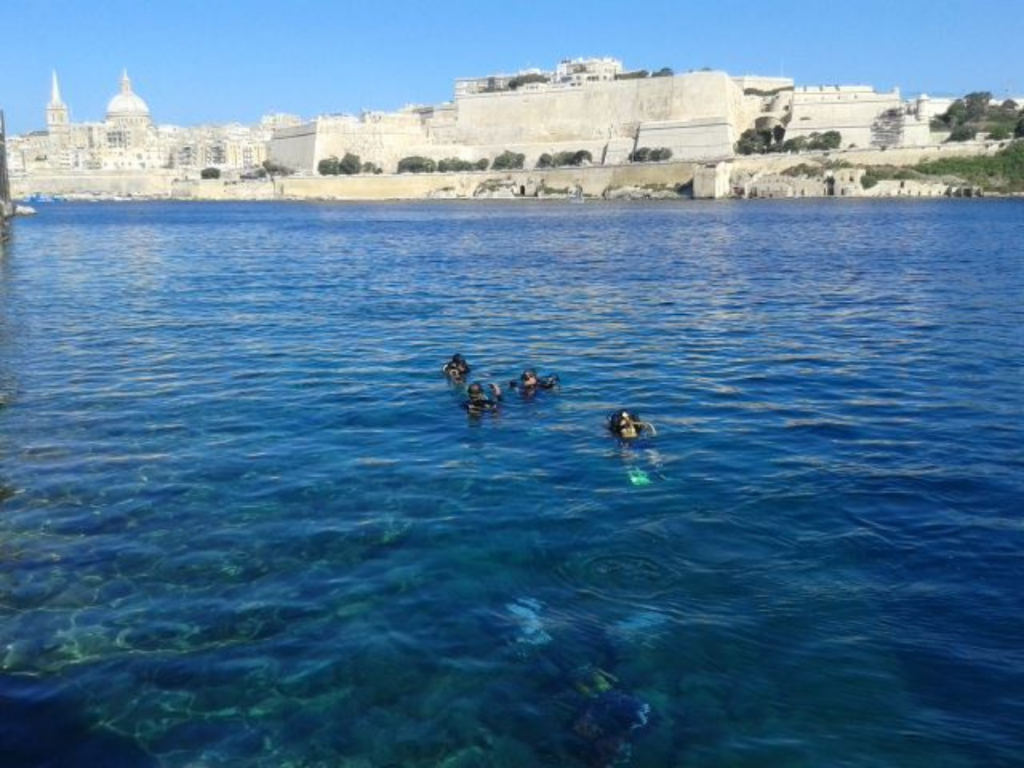
Divers on Malta may explore history in the sea
The Mediterranean island is a playground for explorers, with hundreds of wrecks, caverns, caves, reefs and tunnels to explore. Divers on Malta may explore history in the sea with sunken ships such as Um El Faroud and HMS Maori. The best things to see when diving in Malta are the spectacular night dives at Ghar Lapsi’s and the beautiful underwater archway at Cirkewwa Reef.
Marsa Alam, Egypt
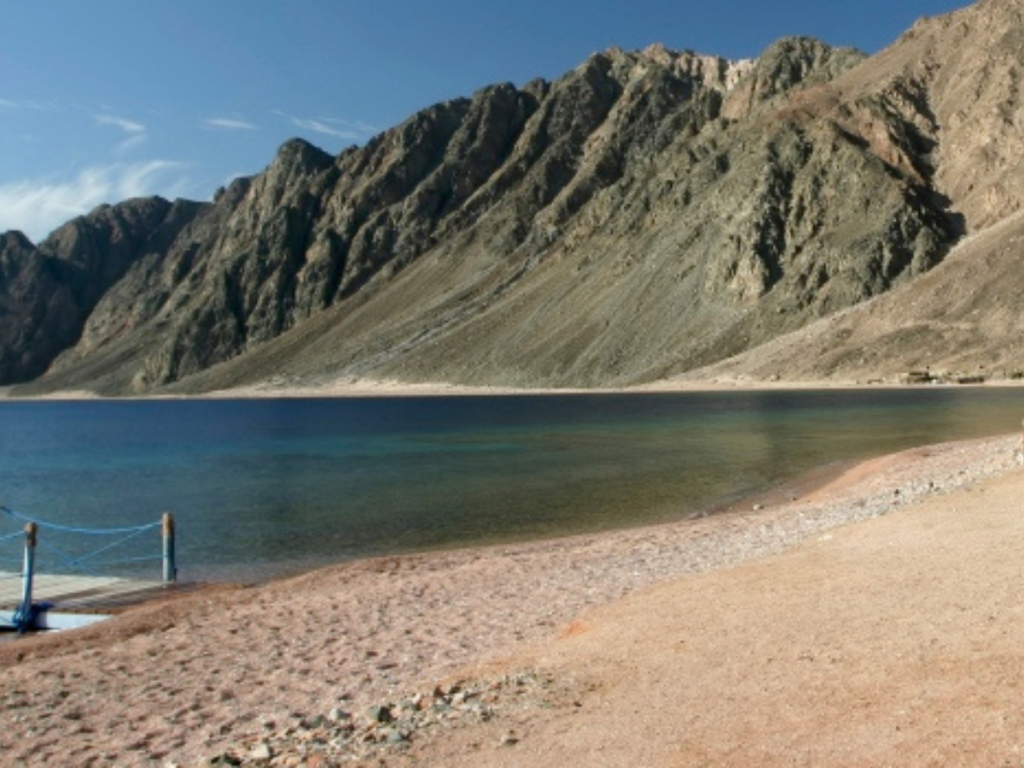
Marsa Alam in Egypt, a 100km stretch of beautiful beaches and amazing reefs.
Although other Egyptian sites are known for their longer diving history, Marsa Alam is quickly becoming a popular destination away from the major tourism destinations. With a 100km stretch of beautiful beaches, amazing reefs, and dive resorts, it’s easy to see why this famous dive destination has become increasingly attractive for both beginner and experienced divers. Rare dugongs, guitar sharks, and turtles may be observed in the waters of Abu Dabbab.
Final Thoughts
As you can see, shore diving is by no means a lower form of diving as it has some great possibilities for experienced and amateur divers alike, whether for training purposes or enjoyment.
Shore diving may be just as thrilling and intense as boat diving. Just keep in mind that you are in command when you’re diving, unlike on a boat. Ensure you have all of the necessary equipment for shore dives and thoroughly research them beforehand.
Most importantly, have fun!
This article was written and published by RUSHKULT, the online booking platform for adventure sports. Visit the RUSHKULT platform to book your next Scuba Dive training, guided trip, and accommodation.

Leave a Comment